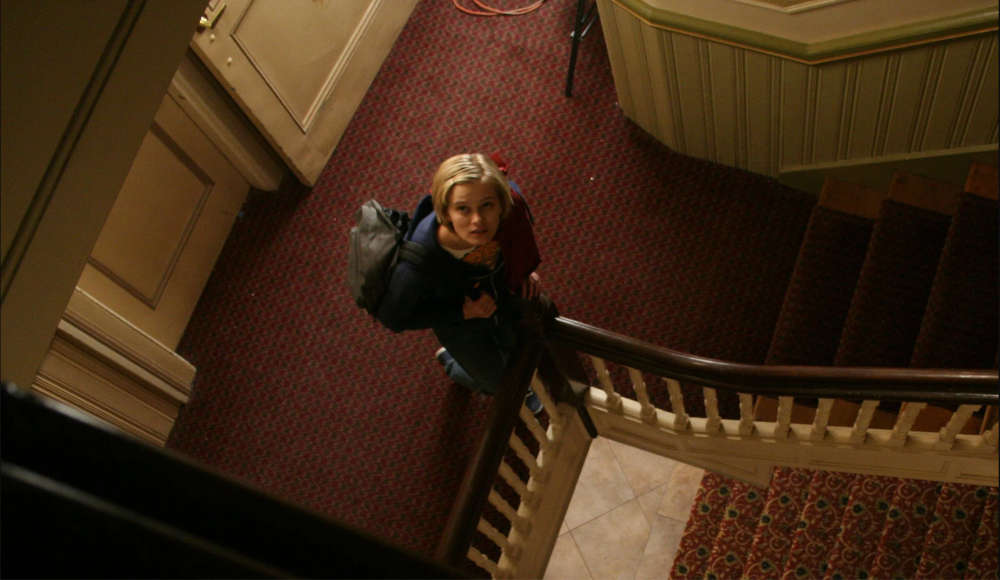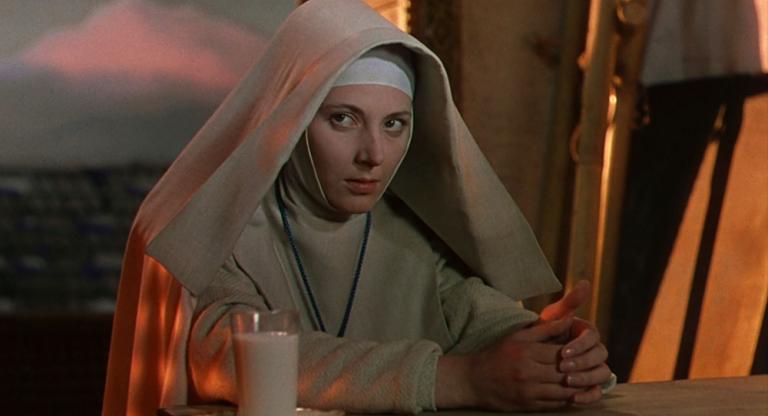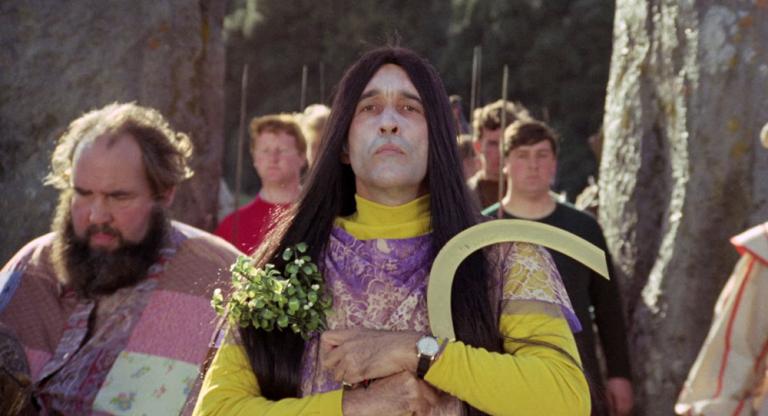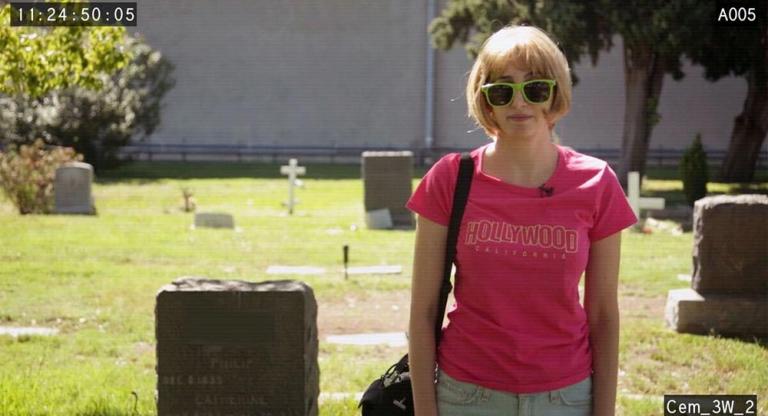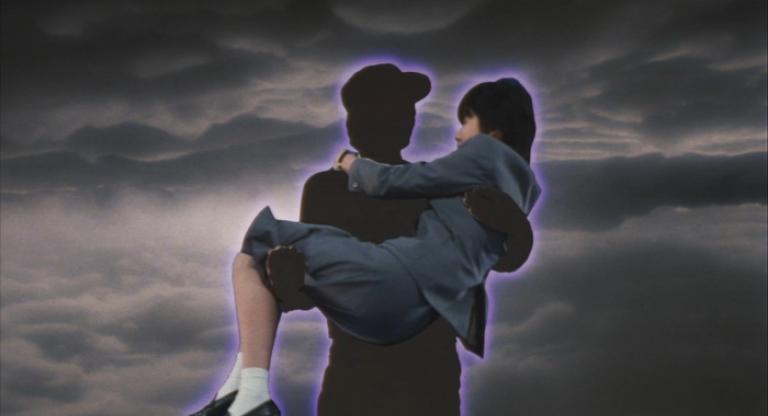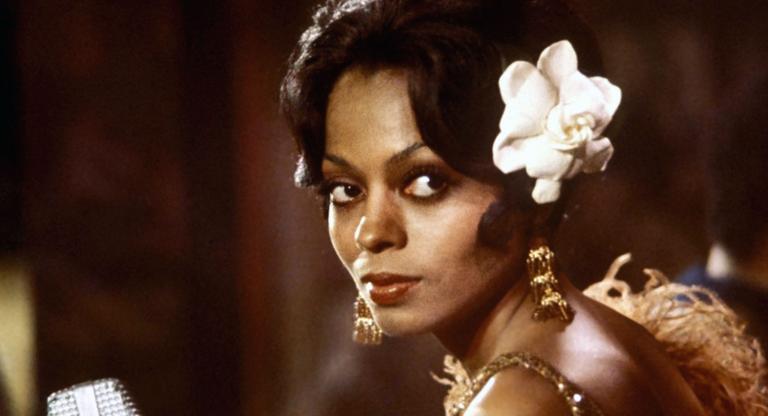There’s a critical moment of self-reflexivity early in Ti West’s The Innkeepers (2011) when hotel clerk Luke (Pat Healy) screens a video on his laptop for coworker Claire (Sara Paxton). She leans closer to the image—calm, almost motionless footage of a rocking chair—and searches for visual interest until a ghoulish face shrieks up from the extreme foreground, blotting out the frame. The jump scare is Luke’s idea of a joke; he and Claire are the sole employees conducting a final weekend of business at the soon-to-be-shuttered Yankee Pedlar Inn, and their graveyard-shift dynamic is fraught with teasing as well as wary affection. But more telling is the film’s citation of horror’s contrastive registers, the lower frequency of suggestive ambiance versus blunt intrusion. The real joke is on jump scares themselves—or on us, if that’s all we’re expecting.
Whereas contemporary mainstream horror is cyclically charged with showing more and meaning less than ever, The Innkeepers’ ponderous silences and sauntering pace epitomize what Joan Hawkins calls “quiet horror”: low-budget productions often indebted to the Gothic tradition, where “an aesthetics of the uncanny” promotes restraint and ambiguity over graphic spectacles of the opened body. Shot in 35mm on location at the Connecticut hotel that housed the cast and crew of West’s earlier film, House of the Devil (2009), Innkeepers is a template for the twofer production model West teases with his latest, X (2022), a paean to 1970s horror that ends on a post-credit trailer for its prequel, Pearl (currently in post-production). West has described X as celebrating not only the rich industrial and cultural intersections of symbiotic “body genres” (namely horror and porn), but the craft of filmmaking itself: all the compositional decisions that map where technique meets artistry. The Innkeepers is also about indie film production, insofar as Claire and Luke comprise a kind of documentarian skeleton crew, using a tape recorder throughout the film to capture proof of the hotel’s ghostly presence for Luke’s spartan website, “Real Hauntings.”
While The Innkeepers may not be “period” in the same sense as House of the Devil and X—and indeed derives much of its texture from the incongruity between dated setting and modern time—it imagines, uncannily, a pre-smartphone moment: an internet of animated banners and visitor counts. To watch it today is to feel a time less remote than that evoked by the faded photographs in the title sequence, but still distinctly of the past, before the reverence and backlash surrounding so-called elevated horror, when a film could be recommended by the subtlety with which it slides into entropy. The Innkeepers may not deliberate anything more esoteric than “what’s in the basement,” but its pleasures, however quiet, are far from muffled.
The Innkeepers screens this evening, April 4, at the Museum of Modern Art on 35mm as part of “Oh, the Humanity! The Films of Larry Fessenden and Glass Eye Pix.”
